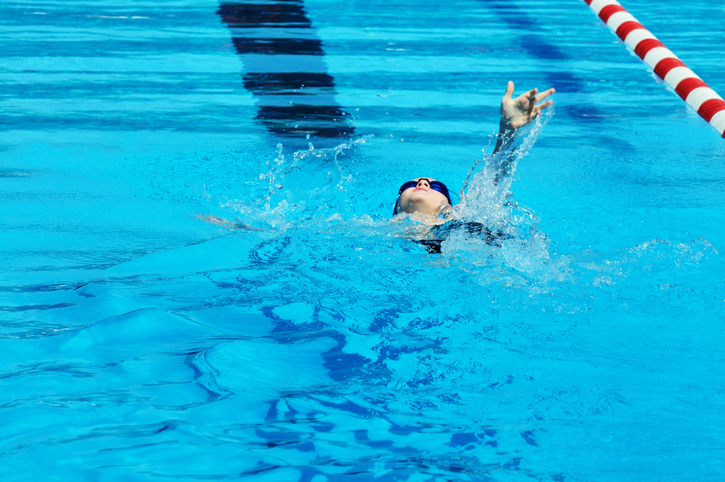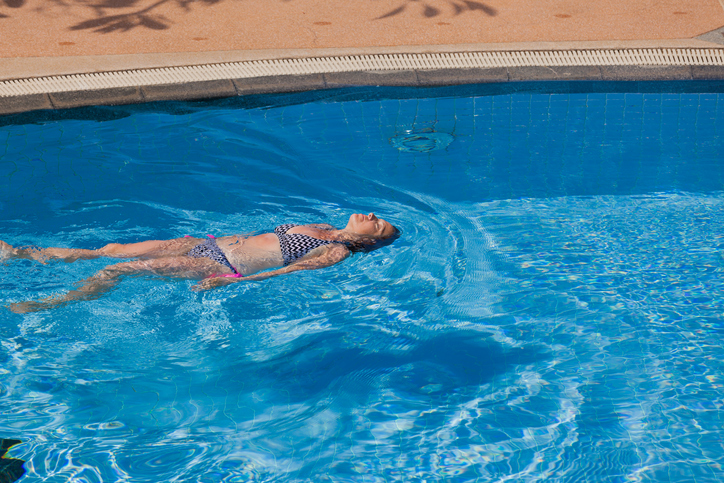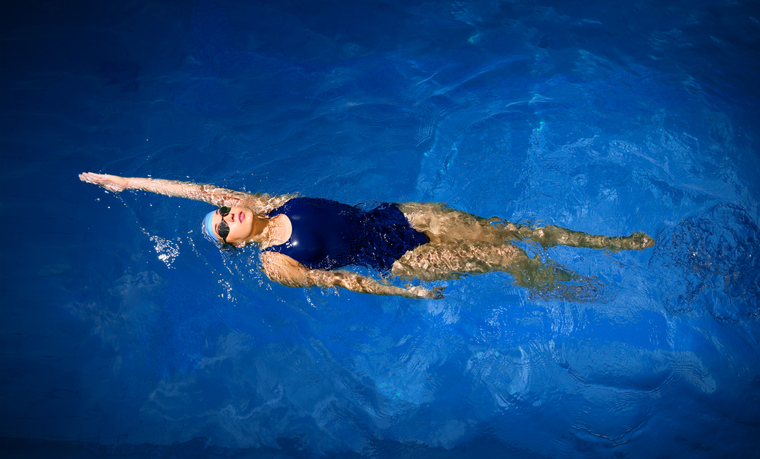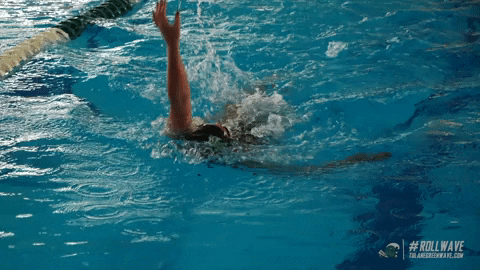Introduction
Backstroke is innately different from all the other strokes; one cannot see where they are swimming, where their hands strike and pull the water, or the pool below them.
Swimming backstroke requires:
- a security in the water.
- ability to source surroundings (usually lane lines) and steer a straight course
- core strength to maintain a sense of a central positioning system
- confidence
Swimming backstroke necessitates a great bit of confidence in the water. It requires effort, patience, and practice. However, learning to swim backstroke is much easier than one may suspect. This blog will outline the drill progression for learning or teaching elementary (fundamental) backstroke technique.
Drill Progression
Drill 1: Reverse Turtle Drill
The first step in learning backstroke begins with floating on one’s back. Assuming a child or novice can perform freestyle (front crawl) and has an ability to float in the water on one’s stomach, the first drill to teach or learn is reverse turtle.
Reverse Turtle drill consists of:
- floating in the water on the back
- arms and hands extended at the sides like a treading breaststroke stroke
- a sustained flutter kick
One can also think of this drill as sitting in an imaginary lounge chair in the water and “fully reclining” one’s legs in the chair as to extend the body into a proper floating position. The arms tread water on the sides while the legs are engaged in flutter kick. One can also think of this drill as arm assisted kicking on the back
Mastery of this drill develops a comfortability swimming on one’s back and is the fundamental step in backstroke drill progression
Drill 2: Six-Kick-Switch
After mastery of Reverse Turtle Drill, the next drill in backstroke drill progression is six-kick-switch. In this drill, one is kicking on their back with one arm extended passed the head and resting in the water in “catch position” - a hydrodynamic position where the swimmer prepares to pull (catch position is effectively a one arm streamline).
Six-kick-switch drill consists of:
- extending right arm into catch position for six flutter kicks
- pulling for one stroke
- rotating the hips to the other side while taking that stroke
- leaving left arm in catch position and right arm by one’s side
- kicking six more flutter kicks while the left arm is in catch position
- repeats steps to rotate back to original side to complete the stroke cycle
This clip shows the form and rhythm of six-kick-switch. Watch 1:25 – 1:35 to highlight the six-kick-switch drill pertaining to the timing.
https://www.youtube.com/watch?v=ERCKjOMErYs
Watch the 1:35 - 1:55 to highlight the underwater pull of backstroke starting in catch position and completing a stroke cycle.
https://www.youtube.com/watch?v=ERCKjOMErYs
It is important to teach a child that in backstroke the pinky of the hand enters the water first and the thumb of the hand exits the water first. This is an easy que to develop fundamental stroke technique.
Drill 3: Six-Kicks-Three-Pulls
After successful completing six-kick-switch drill, the next drill is six-kicks-three pulls. It is a modification of six-kick switch and includes three strokes as opposed to one stroke to rotate from side to side, catch position to catch position. All the mechanics of the drill are completed in identical fashion to six-kick-switch only with the added pulls.
Six-kicks-three-pulls consist of:
- extending right arm into catch position for six flutter kicks
- pulling for three strokes
- rotating the hips to the other side while taking the last stroke
- leaving left arm in catch position and right arm by one’s side
- kicking six more flutter kicks while the left arm is in catch position
- repeats steps to rotate back to original side to complete the stroke cycle
Six-kicks-three-pulls drill is a slowed down version of backstroke that instills the fundamentals of swimming correct and efficient backstroke. Breathing should be conducted in accordance with a rhythm established by kicking and stroking. For backstroke fundamentals, it becomes an inhale for a complete stroke on one side and an exhale for a complete stroke on the other side.

THE MAIN GOAL WHILE SWIMMING IS TO PROPEL FORWARD THROUGH THE WATER
Remind any child or novice you are teaching fundamental backstroke to that they should always think about moving forward through the water while they swim and not get caught up on certain technical stroke ques.
Final Comments
Developing the stroke technique taught by these drills will build confidence in the water and an understanding how to propel one’s body through the water. Without learning to float on one’s back, backstroke will be much more difficult so following chronological order of the drill progression is key. Swimming properly takes practice, patience, and effort. Applying the drill progression outlined in this blog will teach all the fundamentals for any child or novice swimmer to learn how to swim proper backstroke.
Adrien’s bio:
Swim Instructor in Marina Del Ray
8 yr USA Club swimmer, Greenwood Swim Club
4 yr NCAA swimmer, Florida Tech
Hi! My name is Adrien and I have been teaching students to swim for 6 years. I attended Florida Tech where I earned a B.S. and M.S. with a thesis in chemical engineering and completed all four seasons on their NCAA DII swim team. My connection with the water drives me to help others experience the joy of swimming. Years of experience and an ongoing passion has brought me here to help you or your child develop into an excellent swimmer.
ABOUT SUNSATIONAL SWIM SCHOOL
Sunsational Swim School is the 🥇 #1 rated provider of private, at-home swimming lessons in America. We have specialized swim instructors for students ages 6 months to adult, beginner to advanced. Featured on ABC, CBS, Impact 100, The List and others, Sunsational instructors have a minimum of 2 years of teaching experience, are CPR certified and insured, and have collectively taught over 302,223 lessons for more than 74,415 students nationwide!






